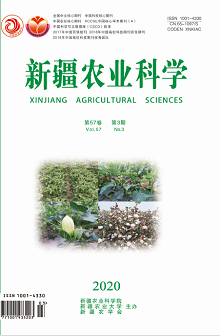|
|
A Preliminary Report on the Species of Natural Enemies Ladybug in Yili Valley of Xinjiang
Aerziguli Rouzi, DING Xinhua, Tursun Ahmat , FU Kaiyun, HE Jiang, Adili Shataer, GUO Wenchao, YU Guoyue
2020, 57(3):
507-518.
DOI: 10.6048/j.issn.1001-4330.2020.03.015
【Objective】 As an important group of natural enemies, ladybug has great potential for exploitation and utilization. In order to provide scientific guidance for the protection and utilization of natural enemies in Yili valley, a systematic investigation of ladybug species in Yili valley, Xinjiang was conducted. 【Method】In this study, the composition and distribution of ladybug species of 14 typical habitats in 90 sites in 9 counties and cities in Yili valley, Xinjiang were investigated by net and visual methods.【Result】A total of 1,173 specimens belonging to 20 species of 11 genera of 3 subfamilies were obtained, among which the dominant species were Hippodamia variegate and Propylea quaturodecimpunctata. Coccinulla sinensis (Weise,1889) was a new record species in Xinjiang. There were significant differences in the species composition and community structure of ladybug in different habitats. Ladybug species in weed habitat were the most abundant, up to 13 species, while ladybug species in apple orchard habitat were the least, only 1 species. The species diversity analysis showed that the diversity indexes of wheat and paddy fields in different habitat systems were the highest, which were 0.710,942 and 0.693,948, and the richness indexes were also high, while the evenness indexes were poor, which were 0.396,785 and 0.356,619, and the dominance indexes were also low. However, the first three diversity indexes of apple orchard and peach orchard were very low, but the dominance indexes were the highest. In different areas, the diversity indexes of Nilke County and Yining County were very high, 0.703,382 and 0.667,679 respectively, and the richness indexes were also very high, 1.257,681 and 1.645,922 respectively, but the evenness indexes of these two counties were poor, 0.361,467 and 0.289,969 respectively, and the dominance index was also low. The diversity index of Tex County was the lowest, 0.301,030, and the richness index was lower, 0.378,923, while the dominance index was the highest, 0.500,000. 【Conclusion】The more frequent the external intervention, the worse the distribution of ladybug species and the diversity of species and groups. The more single community structure was, the more unstable the ecosystem was, which affected the change of ladybug community structure in Yili valley. It is suggested that the protection and utilization of natural enemies of ladybugs should be strengthened in Yining County, Nilke County and other areas with the most abundant ladybug species.
|

